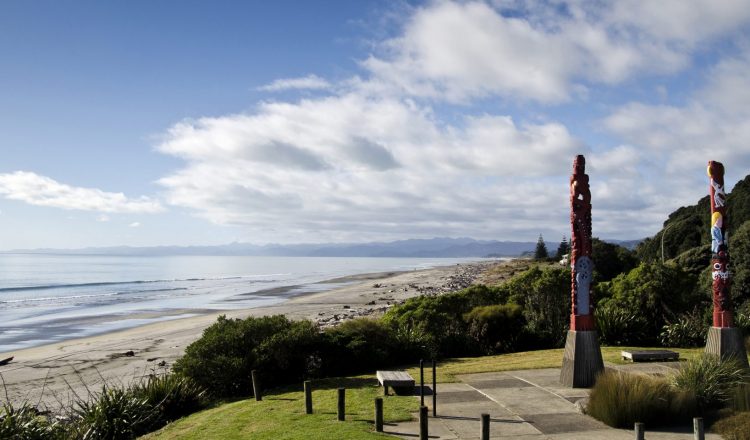Ōpōtiki is a small town in the eastern Bay of Plenty in the North Island of New Zealand. It is named after a spring found on the eastern bluff above Waiotahe Beach called ‘O-Potiki mai-Tawhiti’. The spring was named due to a chief Tarawa and his brother who set sail for New Zealand in a canoe named Te Srautauta, accompanied by two Tanahanaha fish pets know as O-Potiki-mai Tawhiti, meaning “two pets from afar”. He put these fish in this spring.
The earliest recorded residents at Opotiki were the Tini-o-Toi and Tini-o-Awa tribes who sprang from the Toi settlement period of the 12th century.
Before the Europeans, Opotiki was a large village and a popular Maori centre. However, in 1769, the local Maori first came in contact with the European when Captain James Cook passed down by the Bay of Plenty coast. Due to this many European and American traders began to visit the area.
In the 1820s there were a long of armed invasions by Ngapuhi armies from Northland. The Opotiki were outnumbered and didn’t have as many advanced weapons so had to retreat from the coast to the rough forested interior.
In the 1830s and 1840s there were more peaceful times and in this time the tribes were able to begin returing to the coast and able to take full advantage of all of the trading opportunities found there. In this time Maori Christian missionaries began to reach Opotiki. Then in 1840 the Treaty of Waitangi was signed, which established British sovereignty. French missionaries began moving in the area of Pa Kowhai, which is what was Opotiki was known as at this time.
In the 1850s and early 1860s there was more development and the Maori began adopting European agricultural methods and crops, such as wheat, pigs and peaches. They traded these with Auckland.
In 1963 the Invasion of the Waikato occurred. It was the biggest event of the 19th century New Zealand Wars. It was between the military forces of the colonial government and a federation of Maori tribes known as the Kingitanga Movement. It lasted for nine months and happened to crush Kingit power, which was a threat to British Authority. It resulted in the Whakatōhea iwi lending their support to anti-British forces, which in turn resulted in Opotiki by British forces in 1865.
Eventually peach came to the district, however most of the land had been taken by British settlers and was made into sheep and cattle farming areas. Because of the small area of cultivable hinterland and because the harbour entrance was treacherous, the hopes of Opotiki town becoming a major centre for the Bay of Plenty were quickly crushed.
There were major floods in the 1950s and 60s which led to the town introducing levees which were stop banks which has successfully stopped damage from floods after it. There was a kiwifruit boom in the late twentieth century which brand great posterity for the area. Now mussel farming is the next big project to help develop the town, as well as bike riding in the Motu trail bringing in tourists.

















































